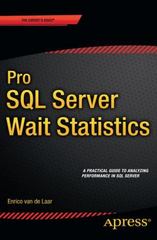Answered step by step
Verified Expert Solution
Question
1 Approved Answer
A quick but detailed soultion please, the last answer to this question did not have enough detail, i have done part a just need part
A quick but detailed soultion please, the last answer to this question did not have enough detail, i have done part a just need part b and c in detail. I.E the exact working out for each step, when calcuating the clutser, i have got this answer which seems incorrect can you point my mistake out, so c is and you subtract it from c c and c respectively which are and you get the answer you then choose the lowest one at random and i chose for c to be assigned with c so the k cluster you then calculate the new mean which is divide by then you assign c to a cluster which is so you subtract which is c and c mean then the mean of k which is c and k which is c and the answers you get is you assign c to c and calculate the mean which is divide by equals now for c which is k which is which is subtracted from then k which is subtracted from then k which is subtracted from equals assign to k and calculate new mean which is divide by giving now for c which is try with k equals then for k equals and similarly for k assign to k new mean for k is now divide by equals now for c which is k which is subtract equals k: k which is equals answer is assign to c why has the algorithm converged show reasons why, why can a second epoch not occur?
Question B Clustering
You have been provided with a dataset containing information about customer spending habits. Your task is to use the means algorithm with Euclidean distance to cluster the following examples into clusters:
tableCustomerSpending in $CCC
table
Suppose that the initial seeds centres of each cluster are C C and C Run the kmeans algorithm for epoch only.
In particular:
a Fill the distance matrix based on the Euclidean distance of the points given above:
tableCCCCCCCCCCCCCCCC
b Calculate the cluster assignment at the end of the first epoch:
a The new cluster assignment ie contents of each cluster
b The centroids of the new clusters
c How many more iterations are needed to converge? Show cluster assignments and updated centroids for each of the remaining epochs.
In your report, you need to include the appropriate cluster assignment and centroids.

Step by Step Solution
There are 3 Steps involved in it
Step: 1

Get Instant Access to Expert-Tailored Solutions
See step-by-step solutions with expert insights and AI powered tools for academic success
Step: 2

Step: 3

Ace Your Homework with AI
Get the answers you need in no time with our AI-driven, step-by-step assistance
Get Started


